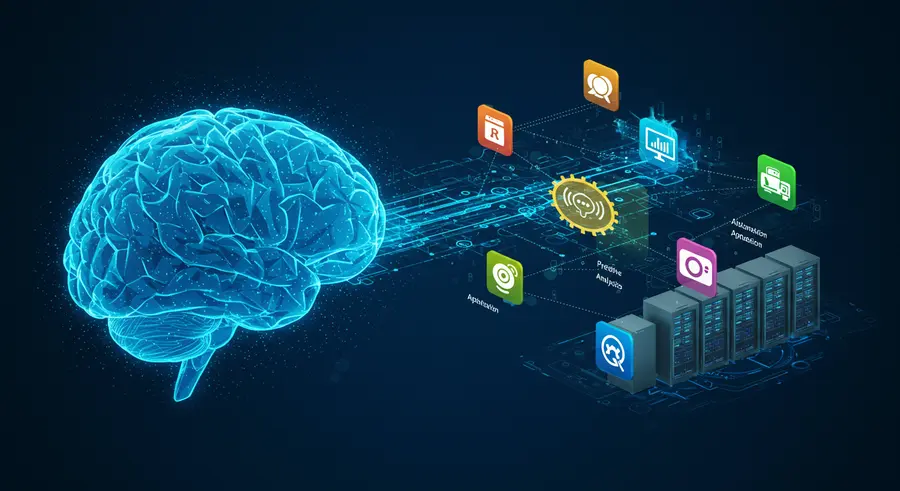Appearance

Welcome, reliability enthusiasts and tech explorers! 👋 Today, we're diving deep into a topic that's rapidly transforming the landscape of modern operations: The powerful synergy of Artificial Intelligence (AI) and Site Reliability Engineering (SRE). If you're involved in keeping systems up and running, ensuring peak performance, or simply fascinated by the future of robust software, this article is for you!
What is Site Reliability Engineering (SRE)?
Before we explore the AI integration, let's briefly recap SRE. Born at Google, SRE is a discipline that applies software engineering principles to infrastructure and operations problems. Its primary goals are to create highly reliable and scalable software systems. SRE focuses on:
- Minimizing toil: Automating repetitive, manual tasks.
- Embracing risk budgets (SLOs/SLAs): Defining acceptable levels of unreliability and using them to guide engineering decisions.
- Monitoring and Observability: Gaining deep insights into system behavior.
- Incident Response: Efficiently identifying, mitigating, and learning from outages.
- Post-Mortems: Conducting blameless analyses of incidents to prevent recurrence.
For a more foundational understanding, you can explore our detailed article on Key SRE Principles and Practices.
The Dawn of AI-Powered SRE
In today's complex, distributed systems, the sheer volume of data generated by logs, metrics, and traces can overwhelm human operators. This is where AI steps in, offering capabilities that go beyond traditional automation:
1. Proactive Anomaly Detection 📊
Traditional monitoring often reacts to predefined thresholds. AI, particularly Machine Learning (ML), can learn normal system behavior patterns and detect subtle anomalies that might indicate an impending issue before it impacts users.
- Example: An ML model analyzes historical CPU usage, network latency, and error rates. It identifies a small, consistent spike in database query times that isn't hitting any static alert thresholds but is an early indicator of resource exhaustion. This allows SREs to intervene proactively.
2. Intelligent Alerting and Noise Reduction 🔔
Alert fatigue is a real problem for SRE teams. AI can correlate alerts from various sources, filter out noise, and prioritize critical incidents, presenting SREs with actionable insights rather than a flood of notifications.
- Example: Instead of separate alerts for "disk full," "high I/O," and "database connection errors," an AI system could group these into a single "Storage Subsystem Degradation" incident, pointing to the root cause more efficiently.
3. Predictive Maintenance and Resource Optimization 📈
By analyzing historical performance data and predicting future resource needs, AI can enable systems to scale up or down automatically, preventing performance bottlenecks and optimizing cloud costs.
- Example: An AI predicts an upcoming surge in traffic due to a marketing campaign and automatically provisions additional compute resources for your web application hours in advance, ensuring a smooth user experience and then scales down after the peak.
4. Automated Incident Response and Self-Healing Systems 🩹
For well-understood failure modes, AI can trigger automated remediation actions, allowing systems to self-heal without human intervention. This significantly reduces Mean Time To Recovery (MTTR).
- Example: If a specific microservice instance repeatedly throws "out of memory" errors, AI can automatically restart that instance or even roll back to a previous stable version, logging the event for later analysis.
5. Enhanced Root Cause Analysis (RCA) 🔍
Sifting through mountains of logs and tracing complex dependencies during an incident is time-consuming. AI can rapidly analyze diverse data sources to pinpoint the root cause, accelerating resolution.
- Example: During a customer login outage, an AI-powered RCA tool can quickly trace the failure back to a recent configuration change in the authentication service and highlight the specific commit that introduced the bug.
6. Smart Chatbots and Virtual Assistants for SRE 💬
AI-powered chatbots can serve as first-line support for common SRE queries, providing quick access to documentation, runbooks, or even executing simple diagnostic commands, freeing up human SREs for more complex tasks.
- Example: An SRE asks a chatbot, "What's the current status of the payment gateway service?" and the bot responds with real-time metrics and recent deployment information.
Challenges and Considerations
While the benefits are clear, integrating AI into SRE isn't without its challenges:
- Data Quality and Quantity: AI models require large volumes of high-quality, labeled data to be effective.
- Explainability (XAI): Understanding why an AI made a particular prediction or decision can be crucial in critical systems.
- Bias in Data: If training data is biased, the AI system can perpetuate or even amplify those biases.
- Complexity: Designing, training, and deploying AI models adds another layer of complexity to the operational stack.
- Security: Ensuring the AI systems themselves are secure is paramount.
The Future is Intelligent Operations 🚀
AI is not here to replace SREs but to augment their capabilities, transforming them into "AI-powered SREs" who can focus on strategic initiatives, complex problem-solving, and continuous improvement. The future of SRE is one where intelligence is embedded throughout the operational lifecycle, leading to more resilient, efficient, and user-centric systems.
Embrace the AI revolution in SRE, and let's build the next generation of bulletproof web experiences! 🌟